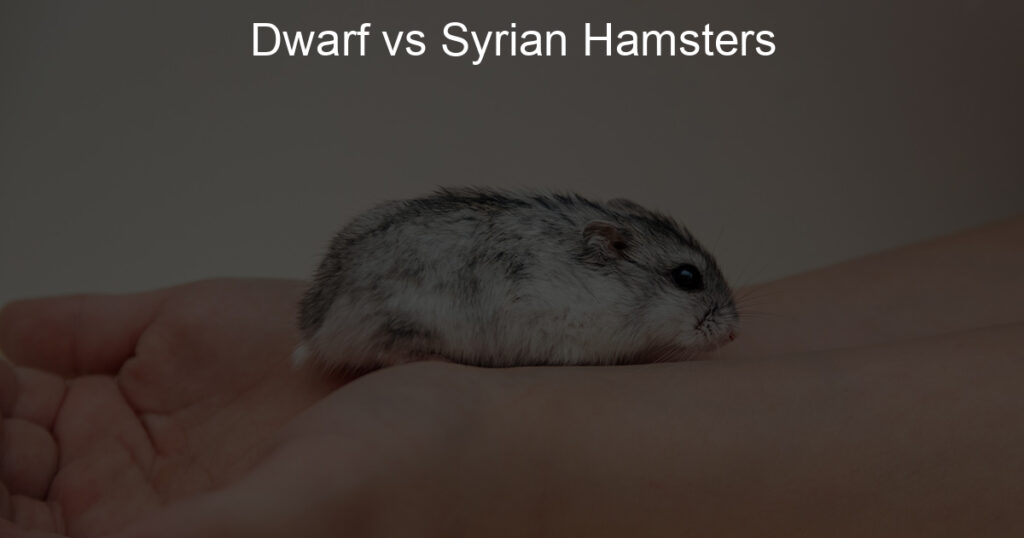Are you a proud dwarf hamster owner? Hamsters are an incredibly popular pet, thanks to their adorable size and inquisitive personality. As any responsible pet owner may know, owning a small animal comes with additional care considerations due to the delicate nature of its health.
Learning about common illnesses that can affect your little dwarf hamster is one important way to ensure its safety and longevity. In this blog post, we’ll discuss some of the most typical sicknesses affecting these fuzzy critters—from respiratory infections to eye problems—so that you can identify symptoms early on and help your beloved companion live a happy life!
What illnesses can dwarf hamsters get?
Dwarf hamsters are a popular choice for pet owners, but unfortunately, they can still be susceptible to various illnesses and diseases. This includes everything from bacterial infections like salmonellosis to parasitic diseases such as pinworm infections. At times, dwarf hamsters can even suffer from respiratory infections, although this is usually brought on by environmental factors such as improper bedding or too much humidity in the air.
It is important to be aware of any symptoms that your pet hamster might exhibit, such as excessive sneezing or difficulty breathing, and see a veterinarian if you have any concerns about their health. By maintaining proper cleanliness and hygiene and having regular checkups with a vet, owners can better protect their beloved pets against illnesses and keep them in peak condition.
What is the most common illness in hamsters?
Hamsters are one of the most popular small pets and unfortunately, they’re also prone to illnesses. The most common is rough hair coat, caused by inadequate diet or poor-quality bedding. This can make a hamster’s fur appear dry and brittle.
Other frequent issues include skin infections, respiratory diseases, bacterial overgrowth in the digestive system, and dental problems due to weak teeth. With regular vet care and proper upkeep of their environment, these issues can be prevented or treated before the hamster’s health deteriorates.
What does a sick dwarf hamster look like?
It’s not always easy to tell when a dwarf hamster is sick. They can be naturally small and quiet, so any changes in behavior can be subtle. A sick hamster may become lethargic or even enter a comatose-like state. Eating and drinking less may occur as well.
Additionally, it is important to pay attention to signs of physical discomfort like sneezing, hunching up its body, discharges from the eyes and ears, excessive scratching behind the ears, flaky skin, and fur loss. If you suspect your hamster is unwell, it’s best to consult a veterinarian who is knowledgeable about small animals for an evaluation and treatment plan.
What are the symptoms of a sick hamster?
All pet parents should be aware of the telltale signs that their hamster may not be feeling well. Sick hamsters will typically carry themselves differently, including being less active or sluggish in movement and often failing to groom themselves as usual. A decrease in appetite is also another telltale symptom that a hamster may be unwell, as these small creatures are typically very voracious eaters.
Other signs can include redness around ears or other body parts, disorientation or abnormal sleeping patterns, teeth grinding and strange clicking noises from the mouth, discharges from the eyes or nose, swelling or lumps on the body, and hair loss. Be sure to contact your veterinarian if you see any of these symptoms so you can get to the bottom of what is ailing your furry pal!
Can a dirty cage make a hamster sick?
Keeping a hamster in a cage that has not been regularly cleaned can put it at risk of getting sick. Hamsters require clean and hygienic habitats if they are going to stay fit and healthy; a dirty cage can expose them to various illnesses, such as skin disorders, eye infections, respiratory illnesses, or diseases related to their diet.
Feces and urine must be removed regularly and all the bedding must be changed frequently, otherwise, the area can quickly become overrun with bacteria and fungi which can lead to dangerous health issues for the pet. Properly maintained cages lead to happier and healthier pets that enjoy living in a clean environment.
Wrapping Up
It’s important to be aware of the common illnesses and diseases that can affect your dwarf hamster so that you can take precautionary measures to keep them as safe and healthy as possible. Caring for a hamster involves committing to its health, which includes regular checkups with a veterinarian and attention to signs or symptoms of sicknesses.
While attending to these preventive measures, remember always to love and nurture your pet. After all, the lovable dwarf hamster makes the perfect companion, brought into our lives with their adorable and spunky personalities. A happy, healthy hamster is only achieved through attentive care!








